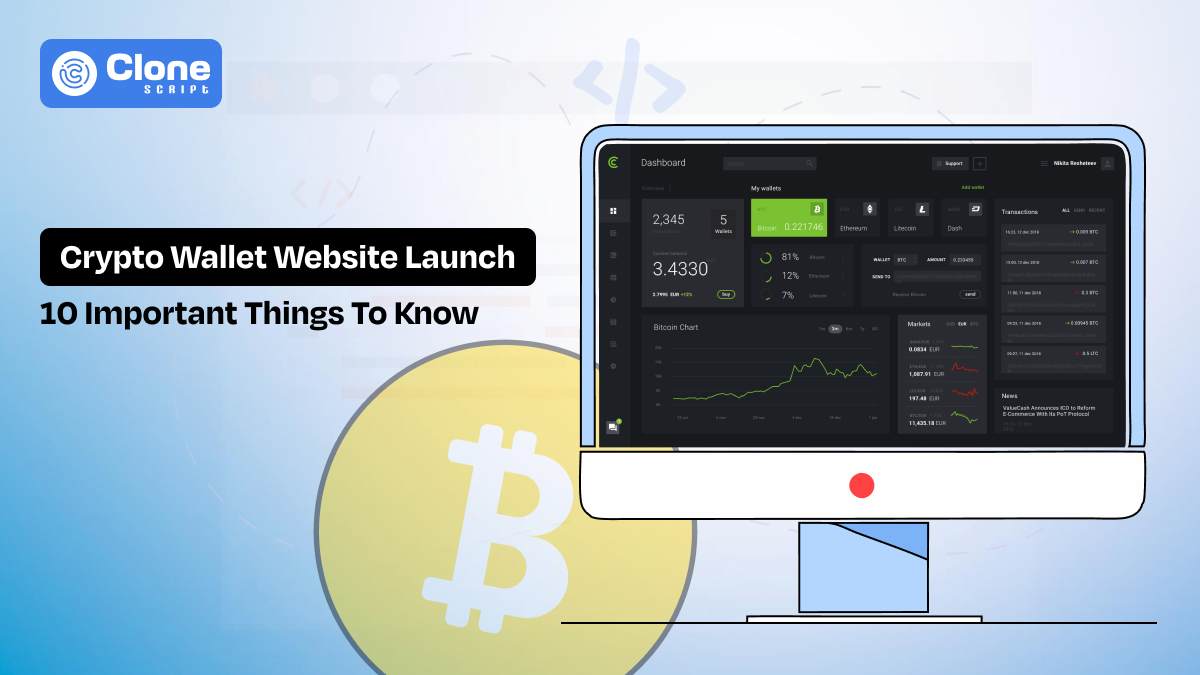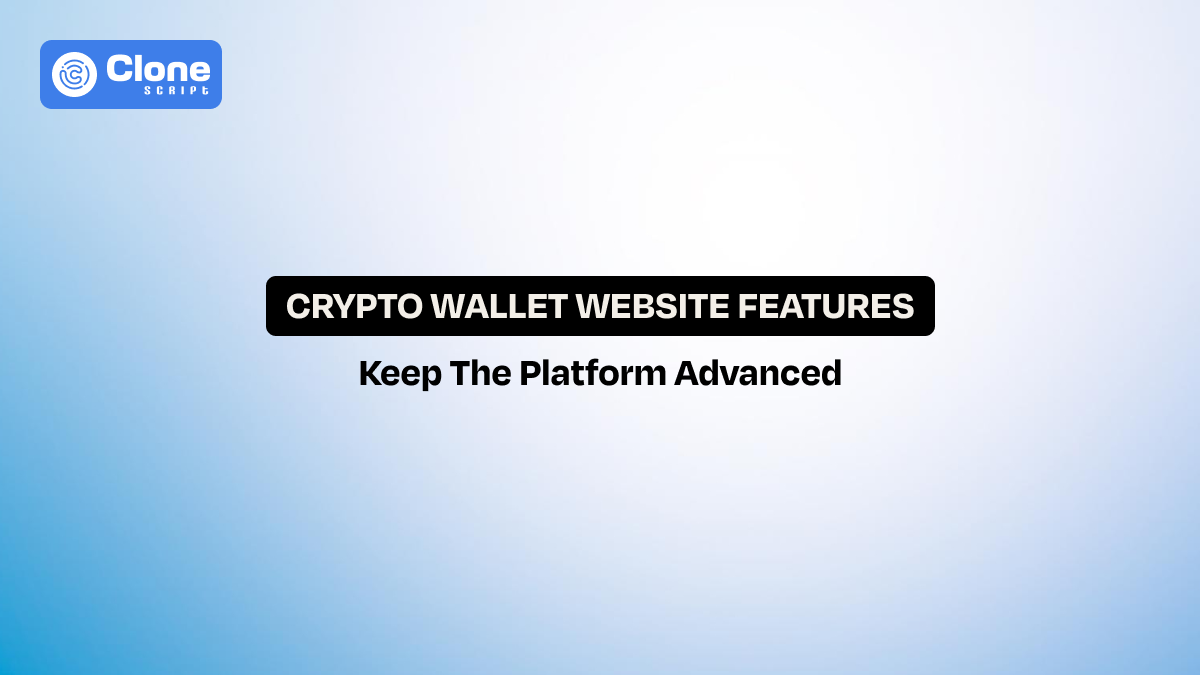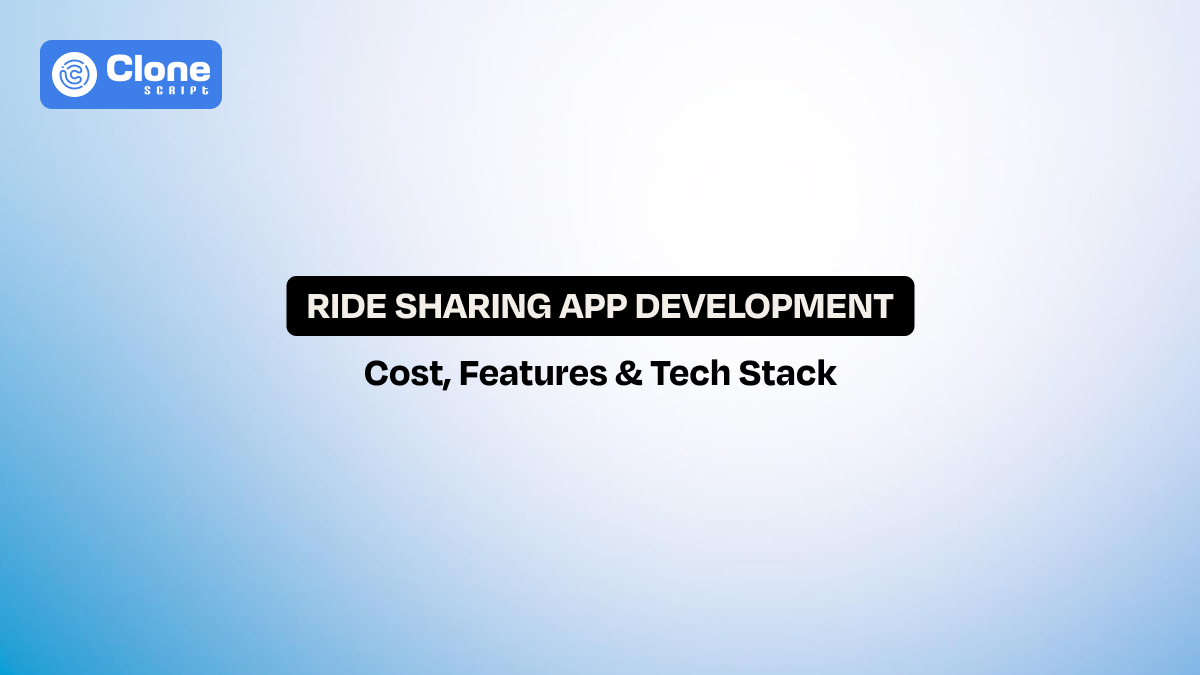10 Things You Must Know Before Launching Your Crypto Wallet Website
Thinking of building a crypto wallet website? You’re not alone. As self-custody, DeFi, and Web3 apps grow in popularity, the demand for secure, user-friendly crypto wallets has exploded.
But launching a wallet isn’t just a coding challenge. It’s a full-blown product journey that spans security, compliance, UX, blockchain architecture, and monetization.
Many developers rush to launch with just a slick interface and basic chain support, only to realize later that they’ve skipped critical steps like key management, user education, and legal compliance. Others overspend on features that don’t match their users’ actual needs.
This guide is your blueprint. Whether you're building for NFT users, DeFi traders, or first-time crypto holders, here are the 10 essential things you must know before launching your crypto wallet website with real-world answers to the biggest questions crypto founders are asking in 2025.
1. Prioritize Security from Day One.
The number one reason wallets fail? Poor security. In crypto, a single vulnerability can destroy user funds and brand reputation instantly. You don’t get a second chance.
Your security checklist must include:
-
Private Key Management: Use a non-custodial architecture where only users control their keys. Advanced methods like Multi-Party Computation (MPC) and threshold signatures add further protection.
-
Audited Codebase: Don’t rely on unvetted wallet templates. Conduct third-party audits of smart contracts, SDKs, and any signing logic. Prefer open-source if possible.
-
Secure Recovery: Provide seed phrase generation with clear warnings. Consider adding Shamir’s Secret Sharing or encrypted backup options for user convenience.
-
Transaction Simulation: Prevent phishing and spoofing with pre-signature transaction previews that clarify what users are approving.
Security should be the foundation of your product roadmap, not an afterthought.
2. Understand the Purpose of Your Web3 Wallet Website
Before writing code or selecting a crypto wallet template, define your wallet’s core purpose. Without clarity, you risk building a product that tries to serve everyone and satisfies no one.
What to Consider:
-
Is it built for DeFi users, NFT collectors, DAO members, or crypto newcomers?
-
Will it be web-based, mobile-first, or a browser extension like MetaMask?
-
Should it support only Ethereum or multiple blockchains like BNB, Solana, and Polygon?
-
Will it include built-in swaps, staking, token bridging, or NFT galleries?
-
Are you targeting individual users or enterprises?
Your wallet’s purpose will directly influence your wallet UI design, tech stack, and feature roadmap. A crypto website built for a niche audience can optimize UX, streamline development, and achieve higher retention rates.
Pro Tip: Start with purpose. A well-defined goal ensures your crypto wallet stands out in a crowded Web3 ecosystem.
3. Know the Legal & Compliance Requirements
If you’re building a wallet in 2025, you must navigate tightening legal regulations. Governments now treat crypto infrastructure with the same scrutiny as fintech platforms.
Key areas to address:
-
Custodial vs Non-Custodial: Custodial wallets may require money service licenses (MSBs) in jurisdictions like the U.S. or Singapore.
-
KYC/AML Compliance: If your wallet integrates swaps, fiat ramps, or token bridging, user identification may be legally required.
-
Data Privacy Regulations: Whether you serve users in the U.S., EU, or India, comply with local laws like GDPR, CCPA, and the Digital Personal Data Protection (DPDP) Act.
-
Geo-Restrictions: Block access in sanctioned or high-risk regions to avoid regulatory violations.
Before launch, consult with legal experts who specialize in blockchain regulation. Skipping this step could result in bans from cloud providers, app stores, or worse, legal shutdowns.
4. Choose the Right Tech Stack & Framework
Your tech stack is the foundation of your Web3 wallet website. It affects build speed, performance, scalability, and security. Each component should be optimized for Web3 development in 2025. Don’t just follow trends; choose tools that are battle-tested and actively maintained.
-
Frontend: For front-end website development, use React (with Next.js) or Vue (with Nuxt) for fast rendering, clean wallet UI design, and built-in SEO. SSR improves speed, UX, and search visibility.
-
Blockchain Integration: Ethers.js, Wagmi, and Viem let you connect securely to Ethereum-compatible chains. These libraries are lightweight, trusted, and essential for building decentralized wallet functionality.
-
Wallet Connectors: For multi-wallet support, integrate RainbowKit, Web3Modal, or WalletConnect v2. These tools allow seamless login across MetaMask, Trust Wallet, Coinbase Wallet, and others.
-
Backend: For backend development of the Web3 wallet website, use Supabase or Firebase to handle authentication, storage, and messaging. Offload sensitive operations to these services and avoid storing private keys or wallet data.
-
Storage: Decentralized storage via IPFS, Filecoin, or Arweave is essential, especially for NFTs or user media. These networks ensure data persistence and censorship resistance.
Pro Tip: Select wallet templates and libraries with recent updates, strong documentation, and security audits. Well-supported tools reduce bugs, boost performance, and scale with your crypto website.
5. Focus on Onboarding and UX
Do you know why MetaMask and the Trust Wallet website have millions of users, even 60% of them are using the platform first time?
Why?
Due to the UX-optimized onboarding flow and ease of accessibility, the wallet providers are winning market share.
So, your site also has to follow them, but not 100%. Focus on user needs and then start website UI/UX design.
The smoother the onboarding, the higher the engagement, especially in an industry where confusion leads to churn.
-
Onboarding Flow: Design a clear, step-by-step onboarding process. Show users how to connect wallets, manage tokens, and explore features without needing outside tutorials or prior crypto experience.
-
Wallet Connection: Support one-click login via Web3Modal, WalletConnect v2, or RainbowKit. Instant access builds trust and reduces drop-offs during the first interaction with your wallet website.
-
Navigation: Use clear menus for actions like Send, Receive, Swap, and Stake. Avoid clutter and ensure fast access to core features, especially on mobile devices.
-
Accessibility: Ensure responsive wallet UI design, dark/light mode, readable fonts, and keyboard navigation. A crypto web design that’s inclusive expands your audience and improves retention.
-
Microcopy & Help: Add helpful tooltips, modals, and empty-state guidance. These small details reduce confusion and help users learn the platform organically as they interact with your interface.
Pro Tip: Study top crypto wallets like MetaMask and Trust Wallet. Borrow proven UX patterns, but improve on them by simplifying, decluttering, and guiding users even better.
6. Optimize Website for Speed and SEO
Website speed optimization and SEO aren’t just for blogs. They directly affect conversions and trust on your crypto website. Users expect fast-loading interfaces, and search engines reward optimized pages.
From code structure to metadata, optimizing both performance and visibility ensures your wallet website gets discovered and used.
-
Page Speed: Use lazy loading, code splitting, and image optimization. Tools like Next.js and Nuxt offer built-in performance features that make your crypto web design lightning fast.
-
Core Web Vitals: Improve LCP, FID, and CLS by reducing JS bloat, using system fonts, and minimizing layout shifts. Google ranks websites with good vitals higher.
-
SEO Tags: Write unique meta titles, descriptions, and Open Graph tags for each page. Structure content with H1–H3 tags to help search engines understand your website.
-
Sitemaps & Robots.txt: Add XML sitemaps and clean robots.txt files. Ensure critical pages are crawlable, and avoid indexing testnet pages or private dashboard routes on your Web3 wallet.
-
Mobile Optimization: Make your wallet UI design fully responsive. Prioritize touch-friendly layouts, compressed assets, and fast interactions. Google uses mobile-first indexing for all search rankings.
Pro Tip: Use tools like Google Lighthouse and Ahrefs to audit performance and SEO. Regular audits keep your Web3 website fast, discoverable, and compliant with best practices.
7. Add Core Features from the Start
Your crypto wallet website must launch with essential features that users expect, including security, token management, and cross-chain support. Skipping core functionality leads to user churn and poor reviews. Start lean but strong, and prioritize utility over fluff to build user trust and adoption.
-
Multi-Chain Support: Support EVM chains like Ethereum, Polygon, and BNB Chain from day one. A multi-chain wallet ensures broader usability and attracts more active users.
-
Token Management: Enable users to view, send, and receive multiple tokens. Include features like token import, fiat display, and real-time balance syncing for smoother wallet UI design.
-
Swaps & Bridge Integration: Integrate trusted DEXs like 1inch or Uniswap and bridge providers like Socket or LI.FI. This makes your website a true all-in-one hub.
-
NFT Support: Offer an NFT gallery with basic metadata and image previews. Users expect seamless access to their collectibles across chains via your crypto web design.
-
Security Settings: Add PINs, biometric login (if mobile), and session timeout settings. These features boost confidence in your wallet website and reduce the risk of misuse.
Pro Tip: Don’t chase every trend. Focus on 3–5 high-impact features. Strong fundamentals make your wallet more trustworthy than bloated apps with unfinished functionality.
8. Test Thoroughly Before Going Live
No matter how beautiful your crypto wallet UI design is, bugs and security flaws can ruin trust. Before you launch a secure crypto wallet website, perform extensive testing, from front-end glitches to smart contract vulnerabilities. This phase ensures performance, reliability, and long-term success.
-
Functional Testing: Test token transfers, wallet connections, swaps, and NFT display. Every feature should work across devices. A broken website flow kills credibility instantly.
-
Cross-Device & Cross-Browser: Test your crypto website on Chrome, Firefox, Safari, and major mobile browsers. Users access wallets on the go. Optimize everything to render perfectly and consistently.
-
Security Audits: Run audits on contracts and APIs. Use tools like MythX, Slither, and third-party firms. Security is non-negotiable when building any Web3 wallet.
-
Performance Testing: Use Lighthouse, GTmetrix, and WebPageTest to stress test your wallet template under load. Simulate high traffic to ensure no slowdown or crash under pressure.
-
User Testing: Recruit non-technical users to navigate your wallet design. Watch where they get stuck. Great UX comes from observing real usage, not guessing.
Pro Tip: Testing is one of the top crypto wallet website design tips. Fixing issues post-launch is costlier. Launch only after 100% confidence in product readiness.
9. Prepare Your Support & Feedback Loop
Support isn’t an afterthought. It’s essential when you launch a secure crypto wallet website. Web3 users often need help with tokens, gas, wallets, or recovery. Setting up efficient support channels and feedback systems ensures your crypto website builds trust and evolves with real user needs.
-
Live Chat or Bot: Integrate a support widget like Intercom or Tidio. A chatbot can handle basic queries on your wallet website, reducing frustration and abandoned sessions.
-
Help Center or FAQ: Create a searchable FAQ covering common issues like wallet connection, token syncing, or fees. Use it to reinforce your brand as the best crypto wallet website template.
-
Ticket System: Use platforms like Freshdesk or Zendesk for structured issue tracking. Helps manage bug reports, especially after the MVP launch of your crypto wallet.
-
Community Feedback: Monitor Telegram, X (Twitter), and Discord. Community chatter reveals UX gaps, bugs, or feature requests, goldmines of insight for improving your wallet UI design.
-
Feedback Form: Place a feedback form inside your Web3 app or wallet website. Keep it short and offer incentives. Real users give you what no audit can: clarity.
Pro Tip: Highlight your support availability on your homepage. Fast, clear help builds credibility, especially for first-timers unsure about things to know before building a crypto wallet.
10. Have a Roadmap and Monetization Plan
Your crypto wallet needs more than features. It needs a vision. A clear roadmap keeps your team focused, while monetization ensures sustainability. Whether you’re open-source or venture-backed, investors and users want to know where your website is headed and how it’ll survive long-term.
-
Feature Roadmap: Outline upcoming features like staking, multi-chain swaps, or hardware wallet support. Transparent plans attract power users to your crypto website early.
-
Release Milestones: Break development into public milestones, beta, mainnet launch, v2, etc. Publishing updates signals accountability and builds long-term trust in your website.
-
Monetization Options: Earn via in-app swaps, affiliate partners, or premium features. Balance UX with monetization so your wallet UI design doesn't feel intrusive or commercial.
-
Open-Source Strategy: Open-source your code to gain community support and contributors. Promote your GitHub in the wallet template to attract developers and foster transparency.
-
Analytics & Growth Loops: Use tools like PostHog or Plausible to analyze usage. Build growth loops via referrals, waitlists, or loyalty tokens, key to scaling your crypto wallet.
Pro Tip: Investors and users both value vision. A roadmap and business model are important things to know before building a wallet in today's competitive Web3 space.
 BTC - Bitcoin
BTC - Bitcoin
 USDTERC20 - USDT ERC20
USDTERC20 - USDT ERC20
 ETH - Ethereum
ETH - Ethereum
 BNB - Binance
BNB - Binance
 BCH - Bitcoin Cash
BCH - Bitcoin Cash
 DOGE - Dogecoin
DOGE - Dogecoin
 TRX - TRON
TRX - TRON
 USDTTRC20 - USD TRC20
USDTTRC20 - USD TRC20
 LTC - LiteCoin
LTC - LiteCoin







